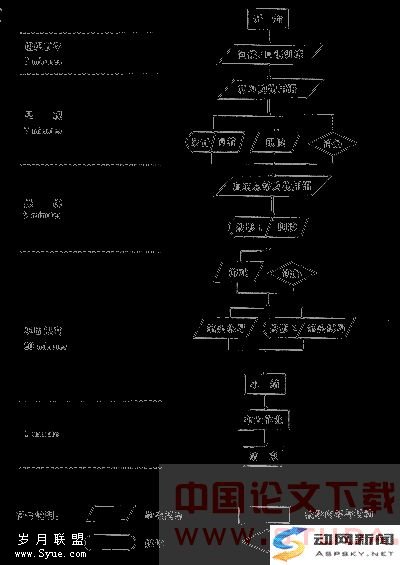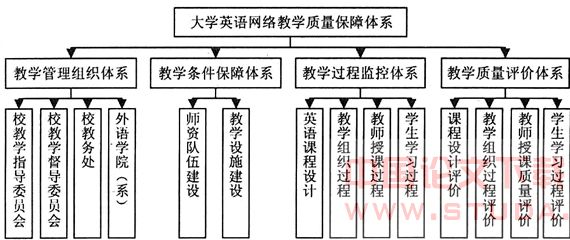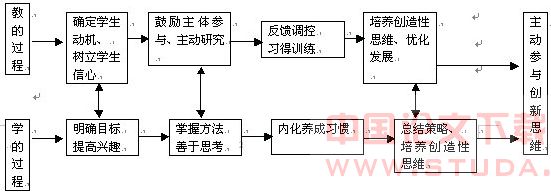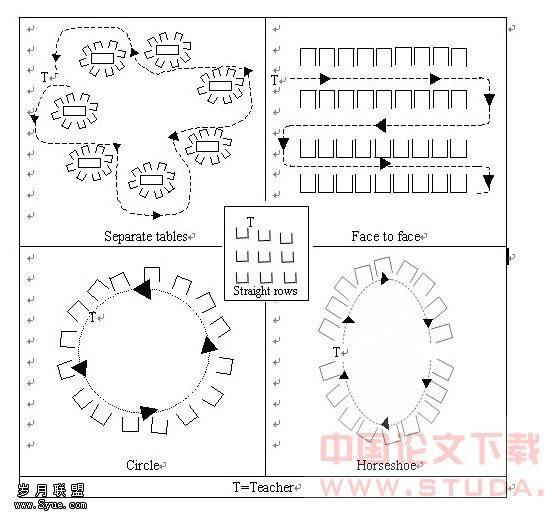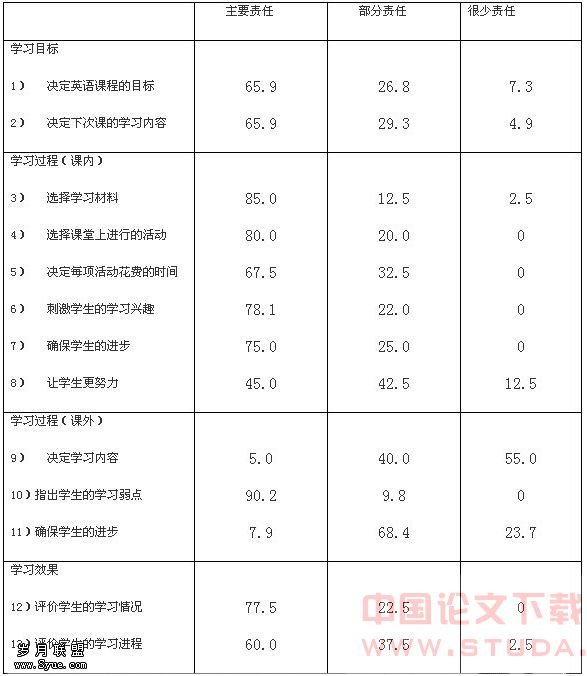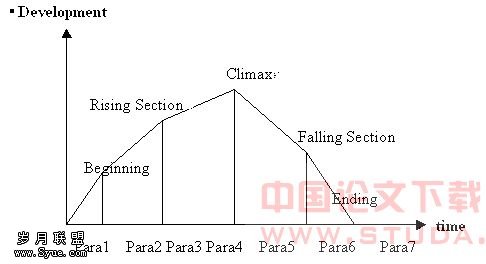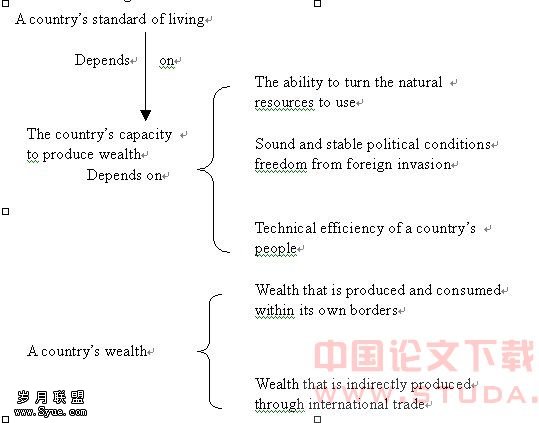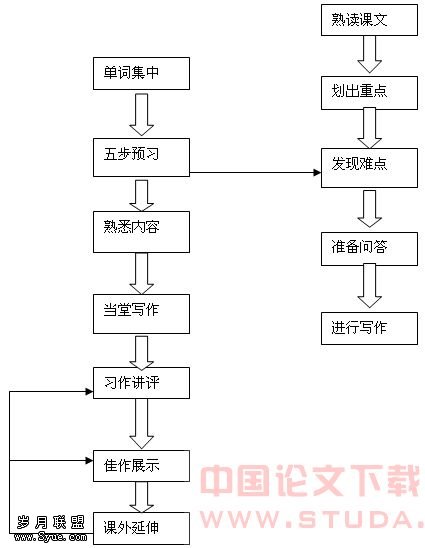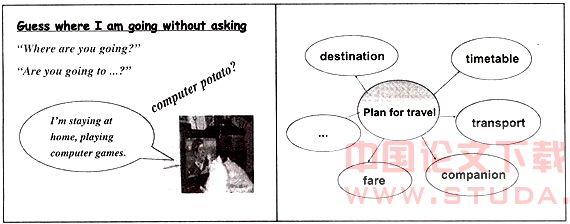中国中学英语教学中如何融入文化背景教学
【 Key Words 】 language teaching; culture background knowledge; culture teaching; English teaching
【摘 要】 语言是社会交际工具,与社会文化的关系密不可分。近年来,随着改革开放步伐的加快,对外交往日益频繁,国与国之间的交流也越来越广泛,跨文化交际成为每个民族生活中不可缺少的部分,然而文化差异是跨文化交际的障碍,已成为整个世界共同面临的问题。因此,文化在教学中具有极其重要的作用,这一观点已经得到了英语界的广泛的认可。但是,学生文化背景知识的匮乏在很大程度上妨碍了英语教学,成为外语教学 中一个严重的问题。新的《英语课程标准》提出了文化意识的培养,外语教学的目的已从传统的听、说、读、写中脱离出来。外语教学中,使学生熟悉所学语言国家的、文化传统和风俗习惯等对拓宽教学内容,开阔学生眼界,使所学知识转化为交际能力,有着不可估量的作用。教师应注重向学生介绍文化背景知识,探索如何在外语课堂上有效地融入文化教学,从而帮助学生克服母语的干扰,养成用英语思维的习惯,更快地掌握语言,这是提高英语教学质量的最佳途径。
【关键词】 文化背景;语言教学;文化教学;英语教学
1 Introduction
The linguist Robert Lado defines the goal of learning a foreign language as “the ability to use it, understanding its meanings and connotations in terms of the target language and culture, and the ability to understand the speech and writing of natives of the target culture in terms of their great ideas and achievement” (Lado, 1964: 25)[1](p90) The teaching of a foreign language inevitably involves the teaching of foreign culture.
With China’s open-up policy and entry in WTO, how to lay a solid foundation for cultivating learners intercultural communicative competence in high-school education becomes an important objective in teaching English as a Foreign Language. For the first time “culture awareness” is prescribed in the New English Curriculum Standard. Culture instruction may be new to most middle-school English teacher in an examination-oriented environment in China’s EFL context. But the research and practice of intercultural communication still have a long way to go before they reach satisfactory results.
This paper, therefore, aims to present what most actual practices in the classroom are need to be clarified before anything can be done to improve future practices, when the new English Curriculum Standard is to be carried out in elementary education.
There are three major parts in the paper: firstly, it is the literature review, which consist of the relation of culture and teaching and current situation of English Teaching in China. Secondly, the extent to how to present cultural background information and expose learners to it in the need of English teaching so as to help learners grasp the crux of the language and develop their ability to communicate in English, followed by the introduction of some of such techniques. Finally the model of classroom practices was proposed by the teaching culture.
2 Culture teaching and language teaching
2.1 Definition of the culture
Definitions of culture range from broader ones to narrower ones since culture is ubiquitous, multidimensional, complex, and all-pervasive and many definitions have been suggested from different angles. From a definition that includes all learned behavior, we can move to a definition that proposes culture with distinct boundaries. “Bates and Plog (1990) proposed a descriptive definition that includes most of the major territory of culture on which scholars currently agree.
Culture is a system of shared beliefs, values, customs, behaviors and artifacts that the members of a society use to cope with. Their world and with one another, and that are transmitted from generation to generation through learning”. [2](p1)
This definition includes not only patterns of behavior but also patterns of thought, artifacts, and the culturally transmitted skills and techniques used to make the artifacts.
Culture was defined as the deposit of knowledge, experience, beliefs, values, actions, attitudes, meanings, religion, notions of time, roles, spatial relations, concepts of the universe, and artifacts acquired by a group of people in the course of generations through individual and group striving. [3](p21) Therefore, culture can include everything from rites of passage to concepts of the soul.
2.2 Language and culture
Languages are generally accepted words and rules drawn from speech. Language is the carrier of culture and culture is the content of language. There is no language without culture content. Social linguistics show that language is a system of structure rules and culture-specific behavior rules that humans use to interact with one another. Knowing a language is known not only the grammar, vocabulary and discourse patterns but also the cultural rules of using those components so as to use appropriate language in a particular context.
It is quite true that nothing more clearly distinguishes one culture from another than its language. For example, a major linguistic difference between Americans and Chinese lies in the use of direct and indirect language. Most Americans learn to say “yes” and “no” as a means of expressing their individual views. However, the Chinese usually use “yes” and “no” to express respect for the feeling of others. [4](P23)
In a word, the development of culture can undoubtedly promote that of language, and in the meantime, the up-growth and enrichment of language is the necessary preconditions to the improvement of the whole culture. It is for the especially close relationship between language and culture. Language is regarded as the carrier of culture, the mirror to reflect the national culture.
2.3 Relation between culture teaching and language teaching
Culture and language are closely related. A language can never be learned in a cultural vacuum. Language learning and culture learning are not separable. “It is the same with culture teaching and language teaching. Traditional teaching in foreign language education has limited the teaching of culture transmission of information about the people of the target country and about their general attitudes and worldviews.” (Claire Kramsch, 2000)[5](p3) In traditional teaching, though students master the pronunciation, grammars, vocabularies and quite a lot of listening, speaking, reading, writing and translating skills, they still can not be said to fully understand and master English. English as a foreign language is the unity of English language and culture. English teaching is essentially a process of cross-culture communication. One purpose of English teaching is to develop learners’ awareness of cultural differences reflected in languages. The teacher must help learners to realize that thoughts and views of different nationalities and different types of societies about nature and human society are quite different. So it is evidently wrong to interpret things in foreign language in the same way as in mother tongue. To the same extent, the achievement of English teaching goal relies on students’ cultural awareness. Therefore, it is of great importance to take for cultural background knowledge as one of the contents in the whole process of English teaching so as to help learners to have a good command of necessary cultural knowledge and to develop basic culture-learning ability.
2.4 Current situation of English teaching in China
China boasts the world’s biggest population of English learners. The English language course has been one of the most important compulsory subjects in China’s high school for many years. In western countries, language theorists and language teachers have tried a lot to integrate culture teaching into language teaching for almost a century. Since the introduction of culture teaching started in the early 1980s, great achievements have been made in research during the past twenty years. [6](p15)
“As far as we know, there are a lot of essays about cultural differences and its teaching, such as The question of Culture, EFL teaching in non-speaking countries by Cem and Margeret Alptekin, English as Cultural Action by Luke Prodromon, Culture Teaching and Foreign Language Teaching by Gu Qianan, Culture Differences and Foreign Language Teaching by Hu Wenzhong and American Cross-cultural communication Research by Jia Yuxin.”[7](p17)
However, there does exist a big discrepancy between theoretical researches and actual teaching practice. And it is also true that weaknesses still remain in our English teaching system.
2.4.1 Teacher’s attitudes towards culture teaching and English teaching
A language teacher plays a leading role in language education. The teacher is the mediator of a foreign culture, and the catalyst of educational change. So teachers’ cultural competence is of great importance in culture teaching in foreign language education. They must get acquainted with the target culture as well as constantly update the knowledge about language teaching.
Nowadays, the traditional Grammar-Translation Method still enjoys popularity among teachers. This method aims at teaching learners to read and translate the written language with a good command of traditional grammar. It’s obvious that the method emphasizes grammatical accuracy, neglecting the importance of the spoken language, not to mention learners’ cultural competence.
Today most teachers have been informed over and over again of the important of culture teaching. However, their belief, in face of difficulties putting theory into practice, may be weakened. It will really be a problem if teachers themselves have not enough knowledge about the target language culture. And it is one of the major factors that hinder culture teaching in China.
2.4.2 Students’ attitudes towards culture teaching and English teaching
English testing should provide an objective and scientific means for the evaluation of the course and the learners’ language proficiency. On one hand, it should help to find out the advantages and disadvantages of the course itself in achieving the desired teaching and learning objectives. On the other hand, it must help to reveal the areas and extent of the students’ strengths and weaknesses, which in turn may help identify problems existing in the relevant high-school English curriculum. But as a matter of fact, the present English testing system fails to provide a good feedback of the actual ability of students’ concerning cultural competence and appropriate language use. English tests conducted in high-school now usually cover the area of vocabulary, language structure, listening, reading and writing. The test is still on measuring the students’ linguistic competence, but ignores the socio-cultural ability of them.
3 The importance of culture teaching in English teaching
“Culture learning helps eliminate communication barriers, prevent us from communication conflicts, develop our field of vision and promote our cultural communication. (Lin Dajin, 1996).” [8](p12) To learn a foreign language and its relative culture will help the students to know the world and themselves from different points of view. Foreign language learning is a spirit adventure, a development of modes of thought, a reorganization of values and a remold of personality structure. In the process of introducing foreign cultures and reorganizing our own culture, culture plays an especially important role.
Learning western culture is not to learn some words by heart, but to learn the thought and values that control one’s acts. Without this knowledge, one cannot really master a foreign language. Only Armed with this knowledge, can Chinese students hope to meet and talk with foreigners in English not only grammatically accurate but also socially acceptable?
3.1 Improving English reading
English reading ability is one kind of comprehensive ability. There are so many English article literature styles including the certain background knowledge. Some reading, although has not bumped into a new word in the reading process, and does not have the grammar barrier, but it is difficult for the students to know the meaning of the whole reading passage, especially when the students lack of the certain knowledge of the cultural context. [9](p31)
For example, there are such several speeches in a reading material:“Why don't you go to church?” asked the minister. The nonchurch goer said, “Well, I'll tell you. The first time I went to church they threw water in my face, and the second time they tied me to a woman I've had to keep ever since.” “Yes,” said the minister, “and the next time you go they'll throw dirt on you.”[10](p2) For understanding of this reading material, the student must know: 1) “The first time I went to church they threw water in my face” means when parents hug the newborn baby to the church for baptism, pastor threw water in the child’s face; 2) “the second time they tied me to a woman I've had to keep ever since.” means they held the wedding ceremony in the church. This article refers to the situation when a westerner dies, pastor finally prays and pulls up the earth to the coffin to carry on burying again. If the reader is not familiar with the religion cultural knowledge in the British and American country, he or she can cause the understanding of being blocked, let alone appreciates humor.
Another example is the dialogue- -lesson Britain and Ireland in Senior Student Book I Unit 22(SEFC):
“Zhoulan: ---Are you English?
David: ---No, I'm not.?
Zhoulan: ---But you speak English.?
David: ---That's correct.?
Zhoulan: ---Where are you from then? Canada?
David: ---No, I'm from Britain.?
Zhoulan: ---But I thought you said you weren't English.?
David: ---Right, I'm British, but I'm not English.?
Zhoulan: ---What are you then?
David: ---I’m Scottish, I'm from Scotland.
Zhoulan: ---Where's that?
David: ---It's to the north of England; It's part of Britain.?
Zhoulan: ---Have you got a map to show me? I'm puzzled.” [11](p87)
Why does Zhoulan feel puzzled about this dialogue? Because Zhoulan does not understand the background knowledge of the Britain and England. Although England and Britain are same to England, strictly speaking, English refers to People of England. England is only a part of Britain. England is bounteous, the populations larger, but it cannot represent Scotland, Wales and Ireland after all. As these local people, they are usually not willing to be regarded as Scottish/Welsh/Irish rather than as English. As British (English), they are may accept as British. That is why David said: “I'm British, but I'm not English.”
In this dialogue, if the students grasp this background knowledge, it is easy for them to understand this dialogue. Therefore, carrying on the background knowledge in this dialogue to the students appears the extremely importance.
3.2 Improving the communication ability
The aim of the English teaching syllabus currently in China stresses the basic skills of listening, speaking, writing and translating, while the most important goal of English teaching should be to foster the ability of communication. [12](p80) However, the various countries have different custom. There are huge difference between China and the western. Therefore, to carry on effective communication properly with the foreigners, one should know about the cultural background of the western nation as exactly as possible, especially the differences with Chinese culture the background knowledge.
Here are three questions: (1) What’s your name? (2) How old are you? (3) Are you married? Any one who knows a little English can ask these questions in English. But if a student asks a young lady from a western country the above questions, he has made a serious mistake in terms of appropriacy. To avoid such silly mistakes, the teacher should help students realize that it isn’t polite to ask westerners questions concerning the age, salary, marriage and other private things, such as political inclination and religious belief, etc. For example, there is such a dialogue in Senior Student Book II Unit 22(SEFC)
---Would you like another piece of beancurd?
---Yes, please. It's delicious. Did you cook it yourself?
---Yes, of course. It's very easy. I'll teach you if you like.?
---How about some more beef? There's plenty more.?
---Well, just a little, please.?
---Let me give you some more chicken. And have another pancake.?
---They're better when they are hot.?
---No, thanks. I'd had enough.?
---What about you, Bob? A bowl of soup?
---I'm full, thank you.
---What a delicious supper! Next time you must come to us. [13](p93)
Here requests student have a cultural background about the polite expression in dine time. China and the western culture have the difference in treating meal. The Chinese take pride in “modesty”, while the Americans in “straight forwardness”. An American hostess, who is complimented for her cooking skills, is likely to say, “Oh, I’m so glad that you liked it. I cooked it especially for you.” Not so a Chinese host or hostess, who will apologize for forgiving you “nothing” even slightly edible instead. The Chinese always like the visitors proposing a toast and the honored dishes, again and again, for fearing that the visitors have not eat enough. The westerners, especially the American, are different. The host or hostess usually offers the dishes for the visitors one time. He or she hopes the visitors help themselves not only cautiously. The visitors should understand the different dinner table for dialogue, communication Otherwise, they might be hungry or be very embarrassing. [14](p21)
Presentation of cultural background can not only help students’ awareness of cultural differences and help them get into a good study habit, but also helps students’ get into know politics, economy, thoughts and ideas of English-speaking countries and nationalities. With general cultural knowledge, they may get to understand the psychology and code of thinking of English-speaking people. This is good for cultivating students’ thinking.
Teachers should make good use of the motive to arouse students’ interest in English learning. Like in "ABRAHAM LINCOLN", teacher should introduce Lincoln to the student and let them know struggle course from the common people to the America President, letting the students feel a great personality the eternal charm. In "MARTIN LUTHER KING, JR.", let the student peep the historical truth of the US racial discrimination and the present situations of a spot, and let the students understand until now US is how arbitrary and is laughable to make unwarranted criticisms to other national human rights conditions. [15](p32) In "THE NECKLACE", let the students understand the vanity of the upper class in the western society, and so on. In brief, in the teaching process, introducing some western culture in the cultural context knowledge to students at the right moment can cause the students’ curiosity to the ancient mystical western culture and the rich and colorful western society, thus stimulating their study interest. The interest is successful one half. If the students are interested in study, it can enhance the effect of the teaching greatly.
4 Method of Improving Awareness of Culture teaching
From above analysis, we can conclude that knowing language forms only is inadequate for the needs of communication. English learning has rich culture meaning. It’s not only the process of mastering, but also that of touching and recognizing cultural thought patterns of the English people. But, for an English teacher, what kinds of culture can be taught in English teaching?
4.1 Making comparison and contrast
4.1.1 Word
Word is the smallest unit of a language that can be used by itself. (Bolinger and Sear, 1968) In English, there may be a single word for a certain object, creature or concept, whereas in Chinese, there may be several words even quite a large number and vice versa. For example, one English word “uncle” is equal to 伯伯,叔叔, 姑丈, 姨丈, 舅舅,ect.; one Chinese word “副”is equal to vice, associate, assistant, deputy, lieutenant, under-,etc. Therefore, in teaching teachers should make a comparison of the customs and traditions between Chinese and English culture. For example, both English and Chinese, words have their symbolic meanings. In English “Sunday” means the first day of a week whereas in Chinese it’s the last day. In Chinese “dog” is usually used in a derogatory sense as “walking dog”, “dog’s eyes look down upon people”. In English, it has commendatory sense. “lucky dog” means “lucky person”, “a Jolly dog” means “happy man”.
4.1.2 Culture content in communication words
With the development of civilization, people pay more and more attention to situation, relationship, strategy, intension and influence of communication. Because of differences the culture between Chinese and English, there are some differences of communication in some situation. For example, “Greetings” “Compliments” “Thanks and Apologies” It can be explained as follows:
(ⅰ) Greetings
It is quite natural for people to greet each other when they meet. Greetings, which are very important to human society, do not convey much prepositional meaning. But if one fails to greet another person when they meet, the consequence can be serious. Though greetings are important, they are not conduced in the same way in different cultures. In English, speakers often use some fixed expressions to greet others, like “How do you do?”, “How is everything?”, “How are you ?”, “Good morning.”, “Good afternoon.”, “Hello.” and “Hi”. And in China, such greetings as 吃饭了吗?去哪儿?出去呀?干什么去?去上班呀?and你好!are still used frequently and extensively. [16](p23)
(ⅱ) Thanks
In both English and Chinese there are expressions of gratitude. Differences lie in what to thank for and whom to thank. English speakers think that everyone is treated as individuals. So the kindness shown in whatever way should be appreciated explicitly. They say “thank you” to anyone who helps them, even to good friends or family members. In contrast the Chinese people tend to thank the one who has done them a major favors several times.
(ⅲ) Compliments
It is generally accepted that showing modesty is to be polite. When being complimented, English speakers would be likely to accept it by saying “thank you” or “I’m pleased to hear so” to show their pleasure and appreciation; while the Chinese would probably try not to accept the compliment to show their modesty and politeness. Both are trying to be polite and modest and probably think they are behaving suitably. And it is hard to say who is right and who is wrong because of cultural differences. The point is that in order to learn a second language well, one has to acquire its culture as well.
Thus, by comparison, students can have an awareness of the differences between the two cultures. It is note worthy that comparison and contrast helps learners better understand different cultural judgments. Comparison and contrast also helps learners explain different cultural behaviors, and it can avoid just explaining another’s behaviors according to the learners’ own standards. Only by comparison and contrast can one distinguishing acceptable culture and unacceptable culture, thus preventing learners from accepting the target culture uncritically.
4.2 Exploring culture-based activities
Linguistic behavior is part of human behavior that differs from culture to culture. The communicative activities here refer to those involving learners’ active participation in communication, such as role-play, information-gap activities, problem-solving activities, etc. In role-plays, students can act out a miscommunication that is based on cultural differences. For example, after learning about ways of addressing different groups of people in the target culture, such as people of the same age, students could role play a situation in which an inappropriate greeting is used. Other students observe the role-play and try to identify the reason for the miscommunication. They then role-play the same situation using a culturally appropriate form of address. If an English teacher wants to present the learners with the general practice of eating out in a restaurant, the best way is probably to provide the learners with English instructions about how to find the table reserved, how to order and how to pay and so on, which can then be followed by the learners’ role-play. This will not only show how well the learners understand them, but also help give them a vivid impression. This technique is useful in which it can help combine with the cultural content and communication-oriented activities.
4.3 Excavating the cultural information in the text
The present middle school English teaching material has compiled the English-speaking country cultural context knowledge consciously. The text content elected is widespread, the literature style diverse, involving each aspect of the west social life, typically and represent. Using text related background knowledge language material, the teacher designs group of or several groups of questions inspiring the student to ponder and guiding the student to drill. “Here is a lesson from ‘America on Wheels’ including the following sentence:
But even though the majority of Americans would find it hard to imagine what life could be like without a car, some have begun to realize that the automobile is a mixed blessing.” [17](p72) According to this sentence, teacher may ask two groups of questions, let the student reply and discuss.
The first group question is (in view of the front half sentence)
(1) Would the majority of Americans find it easy or difficult to live without a car?
(2) Why do they find it difficult to live without a car?
These inspire the student using these two questions to discuss that the automobile brings each kind of advantage and is convenient for the lives of the people, work, the entertainment and so on.
The second group question is (in view of the back half sentence)
(1) What is a “blessing”?
(2) What is a “mixing blessing”?
(3) Why do some Americans find the auto-mobile a mixed blessing?
These inspire the student using these questions to relate the American society reality, and discuss automobile all sorts of questions which bring to the society, such as air pollution, traffic congestion and the traffic accident is unceasing and so on.
Through discussion the students not only drill the language, but also enriched the related background knowledge, which kills two birds with one stone. The practice proved that in English teaching unifying the present teaching material and the cultural context knowledge teaching is practical and feasible. And the effect is obvious. The teaching material covers culture course content and teaching material close relation, which are the textbook knowledge expansion and the deepening. It can increase the classroom’s instruction knowledge and interesting, transferring students’ initiative and the enthusiasm.
4.4 Using authentic materials
Obviously, the best way to learn foreign cultural background knowledge is to go to that country to stay there for a period of time. But we know that it is almost impossible to have such an opportunity, especially for our students. Therefore, it is practically necessary for the teachers to use authentic materials to teach culture. [18](p13)
Using authentic sources from the native speech community helps to engage students in authentic cultural experiences. Sources can include films, news broadcasts, and television shows; Web sites; and photographs, magazines, newspapers, restaurant menus, travel brochures, and other materials. Teachers can adapt their usage of authentic materials to suit the age and language proficiency level of the students. For example, even at the beginning students can watch and to video clips taken from a television show in the target language and focus on such cultural conventions as greetings. The teacher might supply students with a detailed translation or give them a chart diagram of outline to complete while they listen to a dialogue or watch a video. After the class has viewed the relevant segments, the teacher can engage the students in discussion of the cultural norms represented in the segments and what these norms might say about the values of the culture. Discussion topics might include nonverbal behaviors, for example, the physical distance between speakers, gestures, eye contact, societal roles, and how people in different social roles relate to each other. Students might describe the behaviors they observe and determine strategies for effective communication in the target language. [19](p91) Teacher can also pick up some materials pertaining to some aspects of culture revealed in newspapers or magazines and to the discussions of certain questions that might elucidate Western patterns of behavior. For example, teacher pointed out that while reading some materials we could talk about the questions like: What is worthy of this article? What are the events of concern to a reader’s life? What kind of culture include in this article?
Besides, audio-visual media materials and approaches, so different from the traditional chalk and blackboard method, are widely welcome which due to their vivid presentation of both language and cultural knowledge based on authentic circumstances. Educationists have reacted with much imagination and enthusiasm in exploiting the capabilities of modern technology. Some teachers believe that using media in the teaching of EFL/ESL in the classroom is certain to bring about a superior result. It helps to simplify the teaching / learning process and can help to perfect it. Moreover, it can ring in cultural input in a clear and realistic way as compared with traditional instruction.
5 Models of classroom practices
Take Unite15 The necklace Senior Book1B as an example; the text can be presented as follows:
Pre-reading activities
As a motivational phase, “students should be introduced to situations of pictorial collage that generates expectations that will be useful in anticipating and predicting the content of the passage that will be read.” (Wilga M.Rivers: 1997:75) [20](p14) In order to arouse the students’ interest, the following questions are an aid to elicit the students’ existing schemata and develop questions themselves associated with the title and picture.
1. Have you ever learned something about the Chinese plays?
Beijing Opera, Huangmei Opera, Kunqu Opera, Henan Opera, Shangxi Opera, etc.
2. Have you ever learned something about the foreign plays?
3. Introducing the author through showing the picture
While-reading
Step1.Read the introductory part first then ask the students to take notes about the characters and their relationship. Ask two students to write them on the blackboard. (try to complete the following as a model)
Mathilde: a young lady, pretty but vain
Pierre: a government worker, not rich but ambitious
Jeanne: a young lady, rich but warm-hearted
Step2.Read this part carefully again and check the information written on the blackboard together.
Step3.Read the scene1 then ask the students to give the title and discuss the questions in groups
What do you imagine might have happened at balls more than a century ago?
Step4.Read the scene2 then ask the students to give the title and discuss the questions in groups
Why Mathilde was so eager to wear a new dress and an expensive necklace? (It can help students to understand Mathilde’s character.
Step5.Read the scene3 then ask the students to give the title and discuss the questions in groups
1) Why does the play go like this? What was the main idea of the story? What kind culture in that society?
Step6.Read the play again then discuss the following in groups
1) Think of the writer’s intention of writing this play. Is there any significance for today?
2) How does the writer express his opinion by his characters? Find it out in your book.
Post-reading (Assignment for homework)
1Write a summary of these two parts in about 200 words.
2 Make an ending for the play.
6 Conclusion
With the deepen of reform and China’s opening up to the outside world, contrasts between China and other courtiers began to catch our attention. Transcultural communication becomes more and more significant. The cross-culture communicative ability must be developed from an early age and improved in the practice of foreign language learning. As an approach, presentation of cultural background in English teaching is imperative. In fact, we have tried for many years in this field, but not enough and with little fruit. Only by applying methods enhancing transcultural communications and conducting research into English teaching methodology can we greatly stimulate the reform and development of English teaching. As a result, the learner will be capable indeed of using the English language.
References
[1] Wu Qingyu. Culture in Second Language Teaching[J]. 泰山医学院学报,2004,5, P90
[2] 于爱平. Culture Background knowledge in English Teaching[D]. 硕士学位.辽宁师范大学2004, P1
[3] H.H.Stern. Issues and Options in Language Teaching[M]. 上海外研出版社. 1992 ,P21
[4] 崔红霞. 文化背景知识在中学教学中的重要性[J]. 山东师范大学外国语学院学报2003, 4, P23
[5] 黄华铃. Culture Teaching Through English Teaching: Scope and Approach [D]. 硕士学位论文. 福建师范大学.2003, P3
[6] 邵霞. Towards a Macro-mode of culture teaching in Foreign Language Education [D]. 硕士学位论文.上海师范大学,2003, P15
[7] 同[5], P17
[8] 同[5],P12
[9] 谢钰. 文化教学与文化背景知识的传授[J]. 自贡师范高等专校学报. 2000,15, P31
[10] 祁志孝. 学英语(高中版)[J]. 山西太原出版社. 2006,27, P2
[11] 高一英语(下)[M] 人民出版社 1999, P87
[12] 张涛. Cultural background In English Teaching[J]. 内蒙古师范大学学报. 2003,6, 3, P80
[13] 高二英语(下)[M] 人民教育出版社 1999, P93
[14] 余华荣,刘成. 外语教学与文化背景[J]. 河海大学学报. 1999,6, 2, P21
[15] 董蕾. 中学英语教学中文化导入的探索与实践[J]. 教学与管理. 2003,12,P32
[16] Fan Huping Jiang Hongxia. Culture and English Language Teaching [J]. 甘肃教育学院学报. 1997,2, P23
[17] 温健. 英语语言教学与文化背景知识之我见[J]. 甘肃教育学院学报. 1998年,26,P72
[18] 同[2],P13
[19] 同[1],P91
[20] 林玉莲. 论高中英语中的文化教学[D]. 硕士论文. 福建师范大学. 2003,P14
